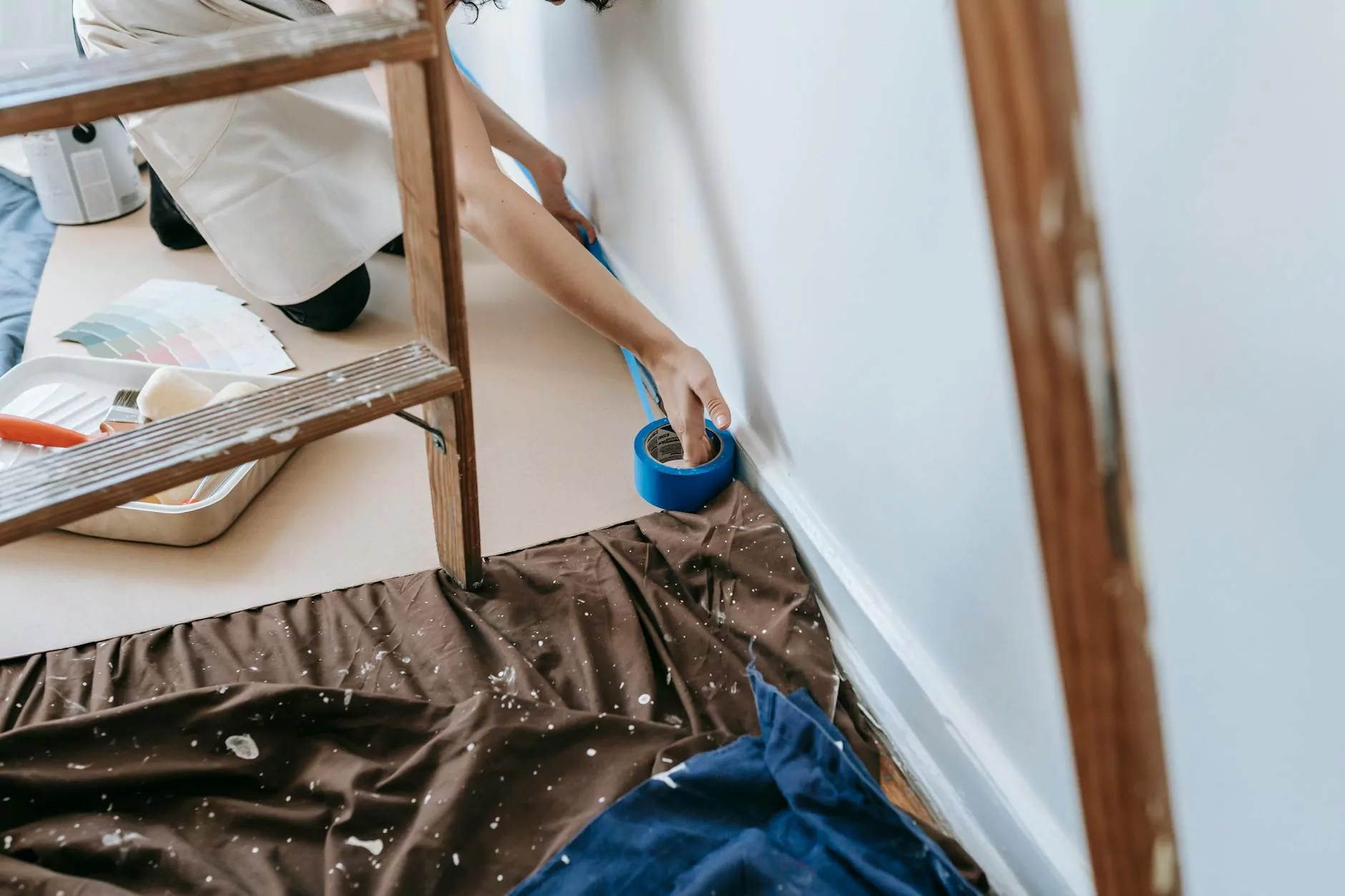Build Your Own Paint Booth: A Comprehensive Guide for Automotive Enthusiasts

The world of automotive painting is as vibrant as the colors we use to transform our vehicles. For car enthusiasts and professionals alike, having the right setup is crucial to achieving that flawless finish. Building your own paint booth is a fantastic project that allows you to control the environment in which you paint, ensuring maximum quality and efficiency. In this guide, we will explore everything you need to know about constructing a paint booth that suits your specific needs.
Why Consider Building Your Own Paint Booth?
When you decide to build your own paint booth, you are investing in more than just a structure. Here are some compelling reasons to undertake this project:
- Cost Efficiency: Renting or using commercial paint booths can be expensive. By building your own, you can save money in the long run.
- Control Over Conditions: Creating your own space allows you to control temperature, humidity, and airflow, which are critical factors for achieving a professional finish.
- Customization: You can tailor your booth to fit the specific requirements of your projects, whether it's for automotive repairs, custom paint jobs, or DIY projects.
- Convenience: Having a dedicated space for painting means you can work on your projects whenever inspiration strikes without needing to book time at a commercial facility.
Planning Your Paint Booth Design
Before you dive into construction, careful planning is essential. Here are the key considerations you should keep in mind:
1. Size and Space Requirements
The size of your paint booth will depend on the types of projects you plan to undertake. Consider the dimensions of the vehicles you paint, as well as any additional space needed for equipment and movement. A typical booth can range from:
- Small booth: About 10' x 10', ideal for motorcycles or small cars.
- Medium booth: About 14' x 24', perfect for standard cars.
- Large booth: 20' x 40' or more for larger vehicles like trucks or SUVs.
2. Location
Choose a location that is well-ventilated and away from flammable materials. It should also have easy access to water and electricity. Building your own paint booth in a garage or backyard shed can often be ideal.
3. Ventilation System
Proper ventilation is crucial when working with paint. A well-ventilated booth will minimize fume buildup and provide a safer working environment. Consider installing:
- Exhaust Fans: To pull out fumes and bring in fresh air.
- Air Filters: To filter out harmful particles from the air.
4. Lighting
Good lighting is essential to ensure you can see what you are doing. Use bright, natural light fixtures or LED lights that replicate daylight quality. This helps in spotting imperfections during the painting process.
Gathering Materials and Tools
Once you have a plan in place, the next step is to gather the necessary materials and tools for your project. Here’s a simple checklist to get you started:
Materials
- Wood or Metal Framework: Depending on your design choice.
- Plastic Sheeting: To create walls and ceilings that can be easily cleaned.
- Filters: For your ventilation system.
- Paint Booth Lighting: High-intensity lights for visibility.
- Insulation Materials: To regulate temperature and sound.
Tools
- Drill: For making holes for screws and bolts.
- Saw: To cut wood or metal according to your design.
- Measuring Tape: For precise measurements.
- Screwdriver: For assembling parts of the booth.
- Utility Knife: To trim plastic sheeting or insulation.
Step-by-Step Guide to Building Your Own Paint Booth
Now that you have everything prepared, let’s walk through the steps to successfully build your own paint booth:
Step 1: Create a Framework
Start by assembling a sturdy frame using wood or metal, depending on your preference. Ensure the structure is strong enough to hold the weight of the booth materials and withstand potential pressure created by your ventilation system.
Step 2: Install the Walls and Roof
Once the framework is in place, cover it with plastic sheeting. This will not only create a barrier to contain the paint but also allow for easy cleanup. Use staples or adhesive to secure the plastic so it doesn’t tear easily.
Step 3: Ventilation Setup
Install your exhaust fans and filters according to your plan. Ensure the fans are positioned to provide adequate airflow, pulling air from the booth out and allowing fresh air to enter. This may require some advanced electrical work, so ensure safety protocols are followed.
Step 4: Lighting Installation
Install high-intensity lights strategically within the booth. The right lighting placement can eliminate shadows and help you see every detail, which is critical for a quality finish.
Step 5: Final Touches
Check adjustments on the ventilation and lighting. Make sure everything is securely in place and that there are no loose ends. It’s advisable to run a test spray to ensure that the environment is adequate for your painting needs.
Safety Considerations
Working with paints can pose health risks, so safety should always be your priority. Here are some steps to ensure safe working conditions:
- Wear Protective Gear: Always don gloves, goggles, and a respirator mask when painting.
- Ensure Proper Ventilation: Your booth should expel fumes effectively to prevent inhalation.
- Store Chemicals Safely: Keep all paints and solvents in proper containers, away from heat sources.
- Follow Local Regulations: Always adhere to local laws regarding paint and solvent disposal.
Maintaining Your Paint Booth
Your paint booth will require regular maintenance to ensure optimal performance. Here are some tips to keep it in top shape:
- Regular Cleaning: Clean the booth after each use to remove dust and paint residue.
- Check Ventilation: Periodically inspect your ventilation system for blockages or dust buildup.
- Replace Filters: Change out your air filters regularly to maintain air quality.
- Inspect Lights: Ensure all lighting is functioning properly, replacing bulbs as necessary.
Conclusion
Building your own paint booth is a fulfilling and practical project that can lead to improved painting results and enhanced creativity. By taking the time to plan and construct a dedicated space, you'll be able to build your own paint booth that meets your precise needs. As you embark on this journey, remember that the quality of your setup directly influences the quality of your results. So gear up, get creative, and transform your automotive painting experience!
For more tips and resources on automotive painting and products, visit autocoatindia.com today!



